Results are What Matter
For decades I have heard about thousands of training related products that claimed to work magic for athletes, oftentimes supported by “abstracts” of research and clinical studies. But very few of them were ever mentioned again just a couple of years later. Similarly, the internet and social media expose us to thousands of ads promoting new training plans and systems that claim to deliver incredible and instant strength results.
Despite this marketing onslaught I remain a big fan of traditional American cycling and also of Plan StrongTM. Why is that? Why advocate two systems that are so different from one another? Because both systems have one thing in common: a long history of delivering great results. No matter how effectively any training related system or product is marketed, only those that deliver the promised results will survive. Time is the fairest Solomonic judge of any statement.
Classic American cycling was born back in the ‘70s and over the decades it has produced some of the strongest men in history. Plan Strong is a strength training system adapted from the methodology used in the golden era of Soviet weightlifting that produced records that stood for decades, some still today.
Go Heavy All the Time and Suffer Accordingly
American cycling was born out of the realization that athletes can’t put the pedal to the metal all the time, given that only two or three weeks of pushing weights over 90% 1RM leads to burn out. Smart coaches and athletes came up with the strategy of building up the intensity gradually and then backing off sharply. They would start light, add some weight to the bar every week, and go really heavy only for a couple of weeks towards the end of the cycle in which they would go for a PR or compete. Once the new PR is set or the competition is over, the athlete would take a couple of weeks off and then enter a new cycle, starting light again. This was done over and over. Pavel and I recently created Reload, a strength program based on this classic cycling strategy. It has delivered great results to the countless athletes and strength enthusiasts who used it.
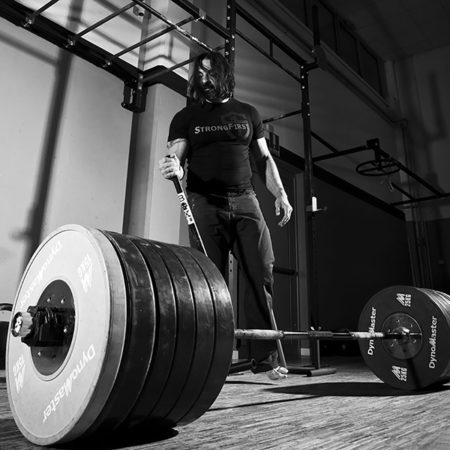
Plan Strong, on the other hand, is a different animal, built around its own distinct principles. In this system, while the volume waves (varying by no less than 20% from week to week and from month to month) the average intensity of the sessions is set around medium intensity weight and stays pretty much the same, varying by only 1-5% from week to week and from month to month. Note that training with an average intensity that is set around medium weights does not mean that only medium weights are used in training. In fact, light, medium, and heavy weights are used in each week of a Plan Strong plan, but they are distributed across the sessions in a manner that the average intensity of every week and every month resides around medium values. That last sentence reveals one of the key factors that makes Plan Strong unique and superior to any other strength training system. It allows the athlete to train heavy regularly which proves to be something of an inoculation against the most uncomfortable element of any training program—the heaviest loads.
I remain a big fan of the classic cycling approach but there are some contingences in which Plan Strong becomes my choice of excellence. One of these contingences is when an athlete experiences the “fear of heavy weights syndrome” while on a classic American cycle. This phenomenon is more common in experts than in newbies, especially if they have experienced some injuries in their strength training history.
Let me explain.
Do Not Live in Fear
A classic linear cycle lasts for 8-12 weeks, with the weights becoming challenging at week 5-8 of the cycle. Factor in that an athlete following this kind of program is most likely coming from a couple of weeks off, an athlete may spend 7-10 weeks without lifting heavy. This lack of practice with challenging weights can lead to a loss of confidence by the lifter when going heavy, hence the “fear of heavy weights syndrome.”
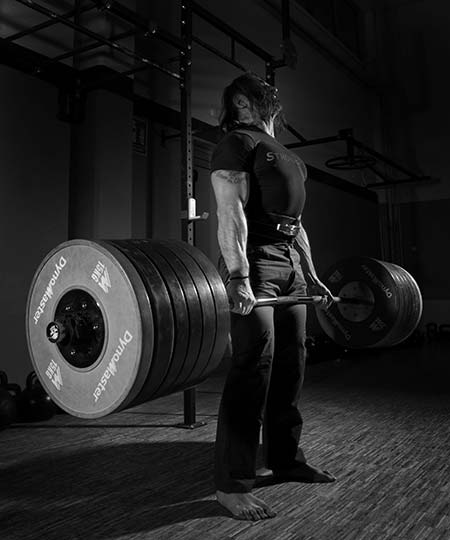
During a linear cycle, both the weights and the RPE (rate of perceived exertion) levels build up together, gradually and inexorably week by week. This often leads to the athlete having a hard time completing all the sets and reps prescribed on a given day. Perhaps the athlete starts feeling some discomfort related to an old injury which generates anxiety for the weights on the horizon. This anxiety builds up through the days and peaks right before the following training session starts, feeding the athlete’s internal dialogue, compromising focus and self-confidence. This combination of anxiety, diminished self-confidence and reduced focus is not good with a heavy session on the docket for the day. Compromised technique and/or failed lifts add a dose of frustration to the mix. Basically, a dog that bites its own tail.
Conversely, none of the above happens with Plan Strong because from week one of the program heavy lifts are practiced regularly, helping the athlete get more comfortable with the challenging intensity. This does not mean that the athlete always goes heavy. A well-designed Plan Strong program ensures three things in the right amounts: heavy lifts to maintain the athlete’s confidence and perfect technique with any weight, medium lifts to build strength, and light lifts to guarantee proper recovery. Also, the number of reps prescribed with each set weight is accurately selected from within well-defined ranges in order to ensure that the RPE levels never shoot through the roof, regardless how heavy the weight.
All of the above helps the athlete feel at ease with heavy weights and removes any internal dialogue and anxiety. This allows the athlete to turn those sets that were previously felt as hard into every day’s practice, with the result of improving technique and safety while becoming stronger.
Don’t miss PLAN STRONGTM Online Seminar
on December 12-13, 2020!
Apply the Program
I will leave you with a Plan Strong deadlift program that I designed for those of you who wish to experience in person what was discussed in this article and are shooting for a new deadlift PR. This plan is appropriate for beginner and intermediate level athletes with proficient deadlift technique. If your deadlift training already averages a volume of 50 or more reps per week, this plan might be too light for you. And if you are looking for a full-customized plan for your deadlift and/or other lifts I am happy to remind you that StrongFirst offers a Custom Plans Service run by myself and a team of Plan Strong programming experts.
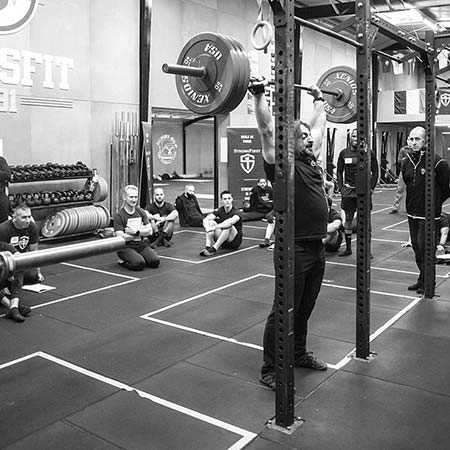
How to Run the Plan
First, you need to know your deadlift 1RM. You should test it rather than estimate it and also make sure that the one rep is performed with perfect technique.
Second, you need to determine your training weights. In order to do so, calculate 75%, 85%, 92.5%, and 95% of your 1RM and round the results to the closest weight available where you train. Once you have done that, insert the rounded numbers in the proper boxes of the plan’s sheets. Below is an example for a lifter with a 1RM of 405lb and with 5lb as the smallest weight available.
- 75%1RM = 303.75 → 305lb
- 85%1RM = 344.25 → 345lb
- 92.51RM = 374.63 → 375lb
- 95%1RM = 384.75 → 385lb
Below is an example of how to fill the boxes:
Once you have inserted all the training weights, the plan is ready to be used.
You will train your deadlift three times per week, possibly on alternate days. (E.g. Monday, Wednesday, and Friday.) On day 1 of week 1 you will complete all the sets and reps indicated in the WEEK 1 line of the SESSION #1 sheet. In our example above, a set of 5 reps with 305lb and a set of 2 reps with 345lb. Likewise, on day 2 of week 1 you will complete all the sets and reps indicated in the WEEK 1 line of the SESSION #2 sheet, and on day 3 of week 1 all the sets and reps indicated in the WEEK 1 line of the SESSION #3 sheet. On week 2 you will do the same, only according to the WEEK 2 lines of SESSION #1, SESSION #2, and SESSION #3 sheets. And so on until week 8.
You may use the sheets as your training diary, by simply crossing every set once you have completed it, as shown in the example below.
Before you start each session perform the warm-up you are accustomed to, but keep in mind that it is merely an appetizer to your main dish which is the plan. Filling your stomach with appetizers might spoil your meal. Once you have warmed-up, ramp-up towards the weight of the first set with a couple of sets of 3-5 reps with a lighter weight. (E.g. 55%1RM x 5, 65%1RM x 3.)
With regards to rest periods between sets, they must allow sufficient recovery to repeat the performance. You should be doing neither a “met-con” nor taking too long rests. Resting 3-5 minutes between sets hits the right spot.
When and How to Test
The testing day is set on day three of week 8.
Warm up and do your ramp-up sets as usual, then do the sets and reps outlined in the WEEK 8 line of the SESSION #3 sheet, so a double with 75%1RM followed by a single with 85%1RM, one with 92.5%1RM, and one with 95%1RM.
Once you have done all of the above you should be ready to test your new 1RM.
You may attempt a PR with a weight in the 102.5-105%1RM range. If you are successful, according to how hard you found that lift to be, you may decide to go for one or two extra attempts with progressively heavier weights, most likely in the 107.5%-115%1RM range. There isn’t much that you can plan ahead here, go by feel but always be wise and prudent. And remember that only perfect reps count.
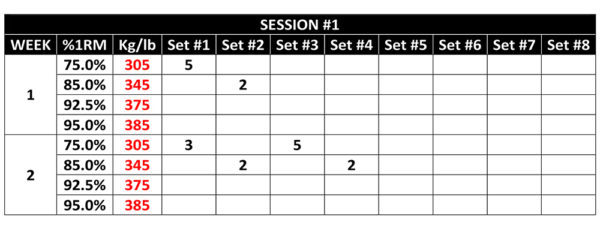


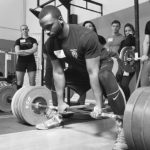
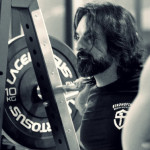




Could you run this alongside RoP or The Giant? If so would you run DL session 1 with Heavy RoP, session 2 with medium RoP, and session 3 with light RoP? Or would you run them on opposite days, creating a 6 day training plan?
Of course!
And DL session 1 with Heavy RoP, session 2 with medium RoP, and session 3 with light RoP works well.
But both options of doing them on the same session or on alternate days will work.
Awesome! Thank you for the quick response! I look forward to giving this a go when barbell arrives.
Thank you for the plan. It was enjoyable to follow and I gained 5 lbs on my conventional deadlift. I lost a week for Thanksgiving and cut weeks 6 and 7 to finish before Christmas, so I can only imagine I would have gained more if I could have followed the whole program. I took my best guess at the principles of the program and rolled a die to make a similar plan for alternate days for my bridged floor press, and I gained 15 lbs! I look forward to doing this program again, uninterrupted hopefully lol.
Nathan,
This is great to hear, thank you for sharing!
Fabio, I see you mentioned in the comments an option to substitute SQ for DL. Is there a reason not to run this program with squats (back or front) instead of deadlifts?
You can definitely run it with squats and I’m sure it will be effective. Only the total volume, it’s ongoing, and the peaking phase are optimized to the deadlift. But it will still do it’s job!
Hey Fabio! Do you think that this plan (volume and intensity) might work for weighted pull ups?
Hi Filip,
It depends on how strong one is and to what pullup volume he/she is accustomed to.
As far as for strength, one’s 70%1RM (with 1RM=bodyweight +added weight) must be higher than his/her bodyweight.
As far as for volume, if one can tolerate an average of 40-60 pullup reps per week, it will work.
On the other side, for one who is used to do over 60 pullups reps per month, it might be not enough.
I hope this helps.
All the plate switching counts as cardio?
It would for me, LOL
How would your modify this for upper body main lifts (eg. bench press, OH press)? Thanks
The monthly volume might be a little low for experienced lifters, but it will work well as it is for intermediate lifters.
You got it, Wes!
Thank you for your very kind words, Sir!
This program looks like it is tailor made for someone who is built to pull. It would kill someone like me. I find it hard deadlifting and squatting heavy in one training week. I tried the daily deadlift dose and actually lost strength. I prefer to deadlift very infrequently and do movements like RDLs , Good Mornings and of course squats to increase my deadlift.
Hi Darius,
How many times per week or month do you mean by training your deadlift very infrequently? Also, when you train it, what is the average volume in a session, in terms of reps and sets? And what the intensity?
Hey Fabio,
Great program outline. I’m interested in using this template in conjunction with some sort of push pull (press/weighted pullup). I’ve completed both your Simple Strength for Difficult Times programs, and found they hit my goals on the head. That being said, would you recommend using SSDT part 2 in conjunction with this DL program or is there something else that might be a better fit?
Thanks!
Mike
Hi Mike,
Thank you, Sir.
You can definitely combine this DL plan with SSDT part 2. You may substitute the SQ with this DL plan and keep the press and the pull as they are outlined in the plan.
I hope this helps.
Sure does, THANKS!
Hello, thank you for the nice text. I like doing deadlifts, this seams to be an interesting program to try. I have a question, how would you combine this program with swings and/or snatches and also with (heavy) squats.
Regards
Ludek P.
Hi Ludēk,
You may do your swings and/or snatches on alternate days. But if you decide to do so keep them explosive (stop each set before you lose explosiveness), go only for low reps and allow generous rest intervals between sets. You want to avoid feeling your hip extensors sore and/or fatigued when you train your DL. Something Q&D 044 would work very well.
Thank you very much!
Thank you very much. Just what i been looking for. You strong first guys are the best and have helped more than you could ever know.
Thank you, Joe 🙂
Very interesting to dissect this program. If we read https://www.strongfirst.com/the-origins-of-strongfirst-programming/ we clearly see the 3 principles at work:
1. A High Volume of Lifts With 70-80% 1RM as the Foundation
– large portion of lifts 75%
2. Training Loads Must Be Highly Variable
– delta 20 principle in place week to week
3. 1/3 to 2/3 of the Max Reps You Could Do Fresh
– Never more than 5 reps at 75%, triples or double at 80-90% singles only above 90%
The key is being able to program this effectively for the goals of the individual and balance total volume with other lifts to achieve the goal. I love articles like this as it gives me a window into improving my own programming. Thank you Fabio for a great article
Hey Wes, you inspired me to look a the distribution of lifts.
Weight-wise:
56% of lifts at @75%RM
43% of lifts at @85%RM
1% of lifts at @92.5%RM
1% of lifts at @95%RM
The plan is divided into two four-week blocks with 200 and 157 number of lifts (NL) per month.
Within-block distribution of weekly NL for block 1:
1 – 15% Small
2 – 22% Medium
3 – 35% Maximal
4 -28% Large
Within-block distribution of NL for block 2:
1 – 28% Large
2 – 35% Maximal
3 – 22% Medium
4 – 15% Small
As you can see, the first block resembles a linear progression with a deload and no lifts above 85%RM. The second block mirrors the first one, with less overall volume, but with some heavy lifts.
Of course, each session is different, albeit with some exceptions (in week 7 a session is repeated).
Anyway, thanks a lot Fabio Zonin for making this plan and posting it! I love the high quality posts of StrongFirst. I imagine it could be great to go from S&S Timless Simple –> Vodka and Pickles –> this plan.
You got it, Wes!
Thank you for your very kind words, Sir!
While I agree traditional old school methods are tried and true to this day, I try to be careful with it. If you have access to a gym and a trainer or spotter that will stop you if your form is wrong, then absolutely go for broke and lift as heavy as you can. As a truck driver, I work a lot of hours and can not get to a gym. So I have to do all of my workouts at home and I stick to high volume medium weight ranges because if something were to happen and I injured myself, my wife would not be able to lift a 300lb barbell off of me. In fact I doubt most first responders that would respond to the 911 call would be able to do it. So if you’re in a gym under proper supervision, absolutely go broke and go heavy.
Hi John,
I agree that lifting heavy without the assistance of an experienced spotter is not a wise decision, and this especially with lifts such ad the bench press or the back squat. The situation is slightly different with lifts such as the deadlift, the front and the Zercher squat, the military press, etc., in which an experienced lifter, in the worst case scenario, is able to simply drop the weight safely.
One thing has to be said with regards to the Plan Strong methodology, though. In Plan Strong plans the number of reps prescribed with a given weight always range from 1/3 to a maximum of 2/3 of the reps that one can complete with perfect form with a given weight. So even when one lifts heavy he/she always stays far away from exhaustion/failure. Let’s say that one can lift a weight for 6 perfect reps, the plan will never prescribe more than 4 reps in a set with that weight. So one goes heavy but always with low/medium RPE scores, and this makes the system very safe.
However, I would still not do my heavy bench press or back squat without the assistance of an experienced spotter.
I hope this explains.
Thank you for the article. As a “ plan strong “ attendee I am hoping one day for a book of plan strong with a simplified method such as this for non competitive lifters ( myself included I just lift for strength and health) . How many times a year would you recommend sone one “Peak” with a competition cycle that doesn’t compete after running predatory cycles only?
Hi Tbone,
Actually something is in the works, but I can’t disclose more for now.
One non competitive lifter who simply wishes to become stronger doesn’t really need to run competitive cycles. He may simply go for a PR or Training Max every once in a while on a day in which he/she feels particularly strong and ready to go for it. However, if instead he/she prefers to run a competition cycle every once in a while, that can happen 2-3 times in one year.